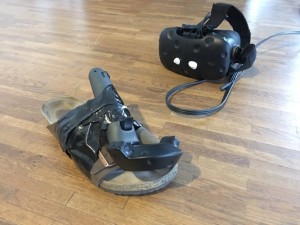One Year Later, Oculus and Valve Still Mum on Timeline to Open Tracking to Third-parties
 [Philip Lelyveld comment: open and interoperable standards are the key to building a market for the higher value VR experiences. Google is setting the baseline by launching and ecosystem to support nearly device- and OS-agnostic live 360 VR streaming capture and playback, including free training at their facilities. Oculus and Valve remaining closed on the higher-level functionality will slow market growth as consumers wonder wither either will be able to maintain an adequate experience-stream to justify buying, and regularly upgrading, the hardware.]
[Philip Lelyveld comment: open and interoperable standards are the key to building a market for the higher value VR experiences. Google is setting the baseline by launching and ecosystem to support nearly device- and OS-agnostic live 360 VR streaming capture and playback, including free training at their facilities. Oculus and Valve remaining closed on the higher-level functionality will slow market growth as consumers wonder wither either will be able to maintain an adequate experience-stream to justify buying, and regularly upgrading, the hardware.]
Both Oculus and Valve have gone on the record to say that they’d be opening up their respective tracking systems for third-parties to make use of, but after a year, neither company is ready to talk specifics.
So called ‘6DOF’ (degrees of freedom) tracking is critical to virtual reality. VR systems need to know where your head is and precisely how it’s moving through space in order to render a virtual world which moves around you as you would expect to see in real life. 6DOF tracking is also important for adding motion input to allow users to effortlessly interact with the virtual world.
But extending those tracking systems beyond the head and hands has a wide range of uses; tracked third-party peripherals could open up a world of new opportunities for VR interactivity. One major use-case is simply mirroring the virtual item—be it a bat, golf club, sword, etc.—to the real object that the player is holding. This enhances immersion because not only is the object shaped and held just as it would be in real life, but the user benefits from all the expected forces like weight, leverage, and momentum from the object’s mass.
Third-party controllers with features that go beyond the first-party offering would also be viable with access to an established tracking system. Tactical Haptics, for instance, is creating a VR controller with ‘Reactive Grip’, a unique haptic solution which can create feedback not possible with rumble alone.
Both companies have gone on record to say that they plan to open up their tracking systems, but have been extremely tight-lipped about timelines or specifics.
Given that it could mean increased developer interest, I’m quite surprised neither company has been vying to be first and best when it comes to opening up their tracking systems to third-parties. Surely both Oculus and Valve/HTC have been busy dealing with some not-so-smooth initial launches, but it’s clear that there’s demand from developers and companies to track more than just head and heads in VR.
See the full story here: http://www.roadtovr.com/oculus-constellation-valve-lighthouse-open-tracking-third-party-api/
Pages
- About Philip Lelyveld
- Mark and Addie Lelyveld Biographies
- Presentations and articles
- Tufts Alumni Bio